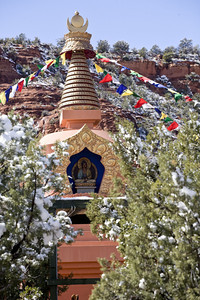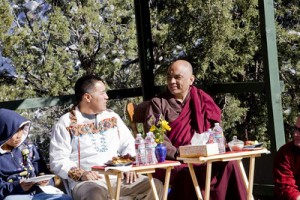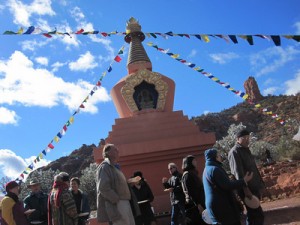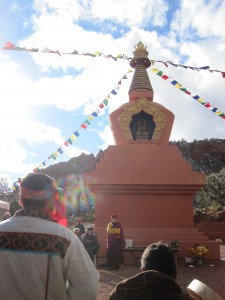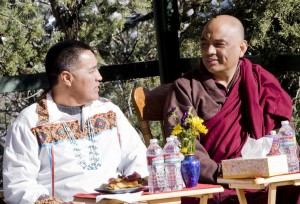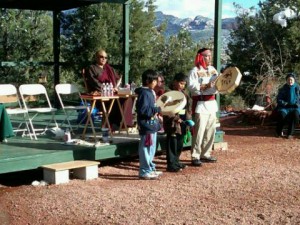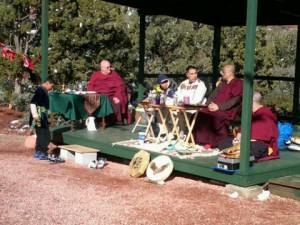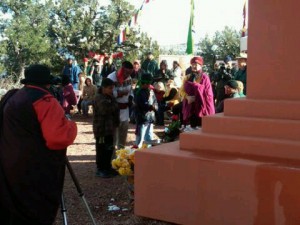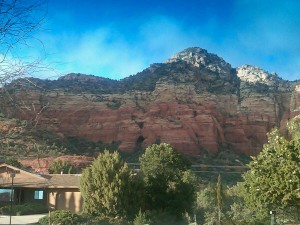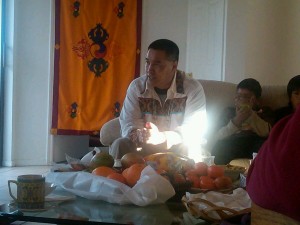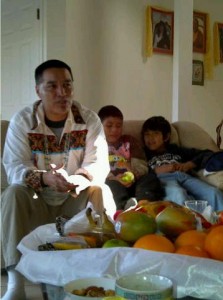From a series of tweets by Jetsunma Ahkon Lhamo:
Hello to all! Have any of you noticed I talk about the movie Avatar sometimes? I’ve watched it in director’s cut (wow!) Prolly 15 times. This movie, about the planet and people of a fictional (?) Planet named Pandora. The people are “indigenous humanoids” called the “Na’vi” and are truly breathtaking in their appearance and their ways. Their planet is lush and green. Their water is pristine. Their culture is noble.
Their goddess is Eywa, “Great Mother.” They make ceremony to become non-dual with her at maturity. They depend on Her for all and since the planet is virginal and healthy She delivers. Our Earth must have been that healthy before we began living out of harmony with her. Hurting torturing and raping Her. Our Earth is quite ill. We hurt our Mother and her children mindlessly. How do we expect the Earth to provide?
The Na’vi people have a beautiful prayer at the time of hunting, and a human death. I can’t say it perfectly but it is like this, for hunt – I cry every time I hear it. “I see you, my brother and I thank you for your life. Now your body will feed and become part of the Na’vi. Your spirit will return to and be one with Eywa. Ah HO. During the feast the animal is cherished, and known. How achingly beautiful, please try to see this movie and take it to heart. It shows us what we do as disconnected humans and where we went off.
Hopi teach there are two paths, basically. One is the “White Path,” where we left and do not know our Mother. We build machines to chew her up. We rip her flesh. Then there is the “Red Path” which never leaves the “way of connection.” The people live in harmony with Mother Earth’s way. We do not dominate her, we listen to her wisdom and live in harmony. It may be too late, as She has been poisoned. We would have to grow up and evolve out of the “I’m number one” idea into “we are life and this is our only planet” idea. We’d have to “see” each other truly. When the Na’vi meet each other they say with a gesture of touching head and heart and saying “I see you.” And it means really see – who and what you are.
I’d give my life if only we could be natural again. Respect and love again. Heal our Mother. I’d give it in a “New York” minute. I am currently trying to restore steep land, clear cut. It is already registered as sanctuary, and I want to give the wild beings their space back. Restore the natural land to food and shelter. This is my deep prayer:
Mother Goddess Earth, holy mother Tara, grant the blessing that I may have help and strength to provide for your babies, and grant blessings that I may give this little broken place back to you, whole and healed. KYE HO!
Hear this cry and accept these tears from a Dakini who is your daughter, your servant and your lover. May you recover, and may those who see “The Way” join hands as one people. Let us pay it forward. Eh Ma Ho!
OM MANI PEDME HUNG! OM TARE TUTTARE TURE SOHA!
PS. Once I was led to Hopi land and found prophesy rock. Behind it climbing down, I saw a place of offerings. I made an offering, then found a perfect green valley, so lush in the desert. I saw light beings there. Working the Earth. Water. I never found it again, though I looked.
When I met with Hopi Elders, Grandfather David was still alive. I told the Grandfathers and Mothers what I’d found. Grandfather David said only people of pure intention could ever find these places. He then said “you are welcome to go to any place in Hopi land you wish.” Then a beautiful Grandmother jumped up and rattled as she spoke to me. “You must never abandon the Red Road!” With deep eyes and blazing heart. I see you, my Mother!
May I never disappoint you, and all beings!
Copyright © Jetsunma Ahkon Lhamo. All rights reserved
